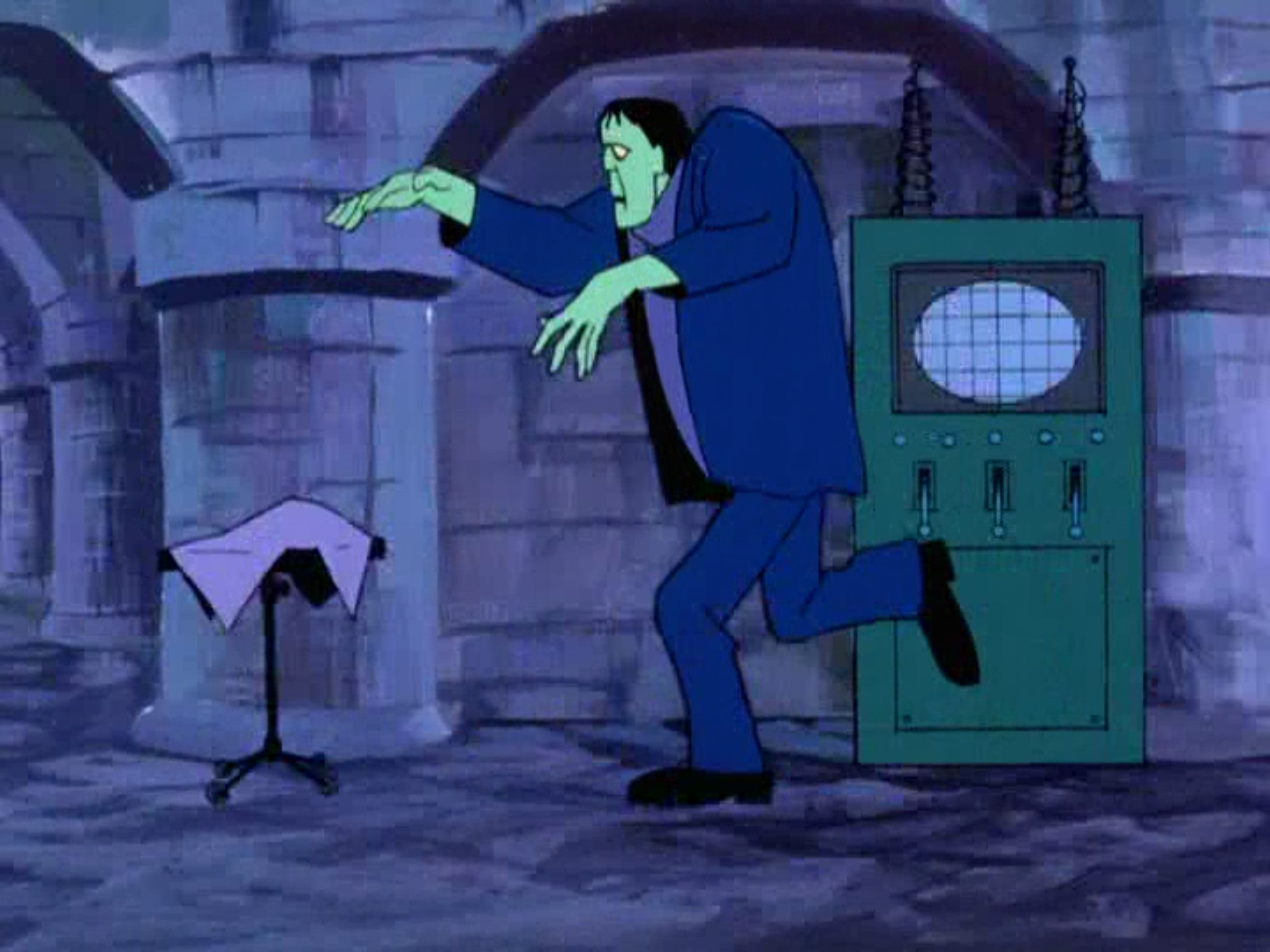Mystery Inc.: Ghost Hunters or Racial Profilers?
What
better way to reference distinct medieval racism than to relate it to Mystery
Incorporated’s questionable mysteries. Monmouth presented a mythhistory that
elaborated Britain’s transformation from an aspiring independent nation to a
leader constantly expressing their supremacy over the other races in Europe.
The original Scooby Doo series showed similarity to that sort of racism by
separating the monsters from their realm. The specific episode, “A Gaggle of
Galloping Ghosts,” showed the best modern interpretation that Monmouth
expressed in his mythhistory. The series’ portrayal of monsters has parallels
with Monmouth’s interpretation of races during the medieval period.
In “A
Gaggle of Galloping Ghosts,” the Mystery Gang came across a mysterious castle
and decided to investigate the multiple sightings of monsters haunting the
grounds despite the gypsy’s warning. They came across a werewolf, Count
Dracula, and Frankenstein’s monster. All very different monsters of the
different origin inspirations, however, the villain that portrayed these
monsters was one person, Big Bob Oakley. When Brutus claimed Britain, he was appalled
when Caesar wanted Britons to pay homage even though they are derived from the same
lineage. As Monmouth’s mythhistory progressed, Britain started to transform
into Rome’s image by racially separating themselves from the rest of Europe.
Scooby Doo showed that through separating the monsters from the accepted realm
of society; however, the show revealed that the monsters were all concocted by
the same individual. That brings back the idea that racially different people
are not actually that different.
The
other parallel between Monmouth’s retelling and Scooby Doo is the supremacy
portrayal. Britain racially described the different races: Picts, Scots, and
Saxons as being inferior and weaker. It can be seen by how Britain rose as a
prominent entity by brutally defeating all the invading armies. Monmouth also
grouped the other races as inferior by Christianizing Britain and making the
other races follow a pagan faith. Sectioning off the different races into one
group can be seen through Scooby Doo’s monsters. The monsters were portrayed as
these terrifying beings because the Mystery Gang was always trying to evade
them. The show also alluded to the idea of supremacy by having the monster fall
into the elaborate traps designed by the Mystery Gang, which expressed the monsters’
intelligence inferiority. Shaggy and Scooby are prime examples of separating
the monsters from society because they exacerbated the monsters’ terrifying images
by expressing their fear in every encounter with the monsters. Even though the monsters
were distinctly different, the series grouped them off from society by making
the protagonists white. The homogeneous grouping of monsters is directly
related to Britain’s depiction of the other races by creating separation and
labeling them as inferior.
In Monmouth’s mythhistory, the Britons
racially discriminated the other kingdoms by grouping them as inferior pagans.
In Scooby Doo’s “A Gaggle of Galloping Ghosts,” the Mystery Gang racially
grouped the monsters as one category even though the monsters were
distinguishable. The parallels both revealed that the races discriminated upon were
actually not that different from the Britons and the Mystery Gang. In the case
of the Britons, the other races were kingdoms described as being not that
physically different, besides the subtle features from the Britons, other than
geographical location, while the monsters in Scooby Doo ended up being Big Bob
Oakley, a human like the Mystery Gang.




No comments:
Post a Comment